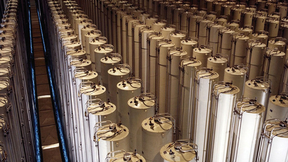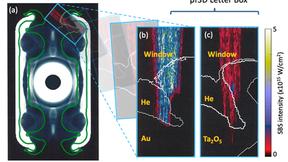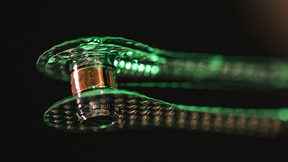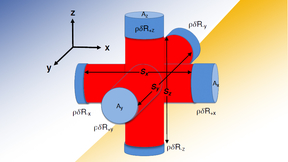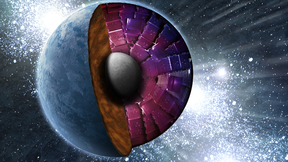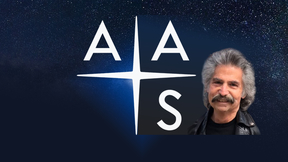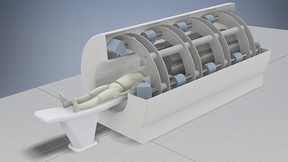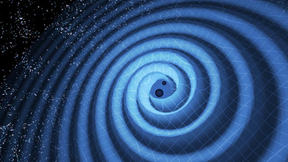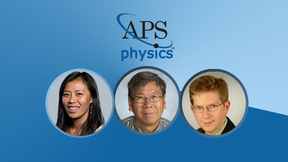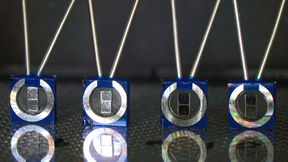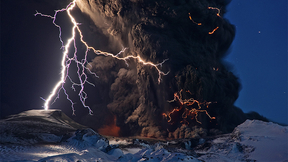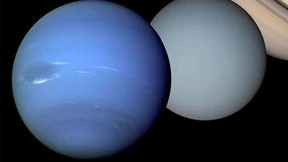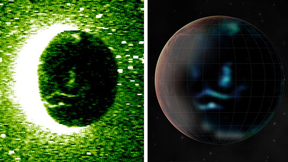Back
Physics
The ACES in Our Hand
The Adaptive Computing Environment and Simulations (ACES) project will advance fissile materials production models and reduce risk of nuclear proliferation.
Space weather satellite includes LLNL-developed optics
The National Oceanic and Atmospheric Administration (NOAA) and National Aeronautics and Space Administration (NASA) successfully launched the GOES-T space weather satellite on March 1, 2022. The satellite’s solar ultraviolet imager (SUVI)—an instrument used to record full-disk images at 6 extreme ultraviolet (EUV) wavelengths every few minutes and from a single telescope…
LLNL constructing high-power laser for new experimental facility at SLAC
Lawrence Livermore National Laboratory’s decades of leadership in developing high-energy lasers is being tapped to provide a key component of a major upgrade to SLAC National Accelerator Laboratory’s Linac Coherent Light Source (LCLS). Over the next several years, LLNL’s Advanced Photon Technologies (APT) program will design and construct one of the world’s most powerful…
LLNL scientists confirm thermonuclear fusion in a sheared-flow Z-pinch
In findings that could help advance another “viable pathway” to fusion energy, research led by Lawrence Livermore National Laboratory (LLNL) physicists has proven the existence of neutrons produced through thermonuclear reactions from a sheared-flow stabilized Z-pinch device. The researchers used advanced computer modeling techniques and diagnostic measurement devices…
Mission Fulfillment with Exponential Impact
The Department of Energy’s (DOE’s) Early Career Research Program (ECRP) aims to bolster the nation’s scientific workforce by providing support to exceptional researchers at U.S. academic institutions and DOE’s national laboratories during their early career years. Annually, ECRP provides research funding to full-time staff in their first 10 years post-doctorate.
Researchers take closer look at stimulated Brillouin scattering
A major cost of running the National Ignition Facility (NIF) is managing and mitigating laser-induced damage to optics as the laser beams propagate to the target. Another damage mechanism stems from stimulated Brillouin scattering (SBS) as light travels back from the target and with nearly the same wavelength as the incoming light. This SBS has the potential to cause…
Nature paper chronicles how researchers achieved burning plasma regime for the first time in a laboratory experiment
After decades of fusion research, a burning plasma state was achieved on November 2020 and February 2021 at Lawrence Livermore National Laboratory’s National Ignition Facility (NIF), the world’s most energetic laser. Obtaining a burning plasma is a critical step toward self-sustaining fusion energy. A burning plasma is one in which the fusion reactions themselves are the…
Hoagland recognized by American Nuclear Society (ANS)
Dylan Hoagland (PHYS) has won the 2021 ANS Mark Mills award. This award is presented to the student author who submits the best original technical paper contributing to the advancement of science and engineering related to the atomic nucleus. Dylan’s paper, “Solution of the Neutron Transport Equation on Unstructured Grids Using the Parallel Block Jacobi-Integral Transport…
Research looks at ‘piston-model’ to understand impacts of asymmetry on ICF implosions
New research conducted at Lawrence Livermore National Laboratory (LLNL) explores the expansion of a classical mechanics model, which has been useful for understanding asymmetries in inertial confinement fusion (ICF) implosions, from a two-piston to a six-piston model to capture higher-mode asymmetries. The work is featured in the Physics of Plasmas. LLNL authors included…
Ironing out the interiors of exoplanets
The discovery of more than 4,500 extra-solar planets has created a need for modelling their interior structure and dynamics. As it turns out, iron plays a key role. Lawrence Livermore National Laboratory (LLNL) scientists and collaborators have used lasers at the National Ignition Facility to experimentally determine the high-pressure melting curve and structural…
LLNL scientist honored as 2022 American Astronomical Society fellow
LLNL physicist Richard Klein has been selected as a 2022 fellow of the American Astronomical Society. Klein, who was selected “for broad and influential contributions to computational astrophysics, for scientific achievements on radiatively-driven stellar winds and star formation theory and for training a generation of students and postdoctoral scholars,” is one of 23…
Radiation to cancer patients in a ‘FLASH’
Researchers at Lawrence Livermore National Laboratory (LLNL) have shown for the first time the potential for linear induction accelerators (LIAs) to deliver effective, targeted doses of “FLASH” radiation to cancer patients. The new technique selectively kills cancer cells with minimal damage to healthy cells. The approach is outlined in a Scientific Reports paper. For…
Research looks at entropy generation from hydrodynamic mixing in ICF experiments
Research conducted at Lawrence Livermore National Laboratory (LLNL) is taking a closer look at entropy — the measure of internal energy per unit temperature that is unavailable for doing useful work — in experiments at the National Ignition Facility (NIF). Work by LLNL physicist Peter Amendt is highlighted as an Editor’s Pick in Physics of Plasma, showing that an added…
LLNL-led team uses machine learning to derive black hole motion from gravitational waves
The announcement that the Laser Interferometer Gravitational-wave Observatory (LIGO) had detected gravitational waves during the merger of two black holes sent ripples throughout the scientific community in 2016. The earthshaking news not only confirmed one of Albert Einstein’s key predictions in his general theory of relativity, but also opened a door to a better…
LLNL engineers deliver final optical components for world’s newest telescope: the Vera C. Rubin Observatory
For much of the past decade, Lawrence Livermore National Laboratory (LLNL) researchers have been designing major optical components for the world’s newest telescope, while their industrial partners have fabricated the components. Now, with the September shipment of the last of six optical filters for the telescope’s camera to the SLAC National Accelerator Laboratory in…
Three LLNL scientists honored as APS fellows
Three Lawrence Livermore National Laboratory (LLNL) physicists have been selected as 2021 fellows of the American Physical Society (APS). The new fellows represent a selection of physics expertise, ranging from intense laser-matter interactions and inertial fusion energy science to leading the development of edge simulation models and codes to pioneering new regimes of…
At the extreme: Breaking the ice mold
New research involving Lawrence Livermore National Laboratory (LLNL) scientists shows that water can remain liquid in a metastable state when transitioning from liquid to a dense form of ice at higher pressures than previously measured. Water at extreme conditions has attracted recent attention because of its complex phase diagram, including superionic ice phases having…
Shock waves in outflow gases could regulate ‘volcano lightning’
Volcanic eruptions spew lava, rock and ash into the air. When fragments of these materials mix and collide in the outflow, they can create an electric potential large enough to generate lightning. New research by Lawrence Livermore National Laboratory (LLNL) scientists and collaborators discovered that standing shock waves in the supersonic outflow of gases prevent…
Come on in, the water is superionic
The interiors of Uranus and Neptune each contain about 50,000 times the amount of water in Earth’s oceans, and a form of water known as superionic water is believed to be stable at depths greater than approximately one-third of the radius of these ice giants. Superionic water is a phase of H2O where hydrogen atoms become liquid-like while oxygen atoms remain solid-like on…
Lawrence Livermore optics used to spot elusive aurora on Red Planet
The United Arab Emirates' (UAE) Mars mission that launched about a year ago has recently captured the most detailed images of auroras in the Martian sky. The optics used to capture these images include a silicon carbide-coated mirror and diffraction grating for the Emirates Mars Ultraviolet Spectrometer (EMUS) that were developed by researchers at Lawrence Livermore…


